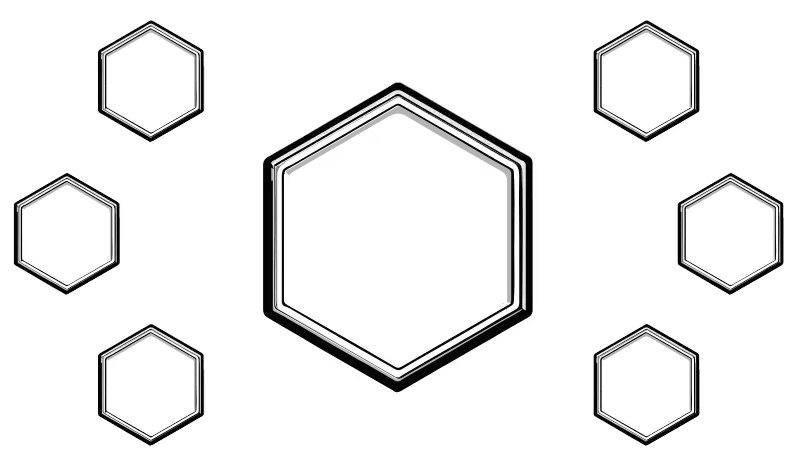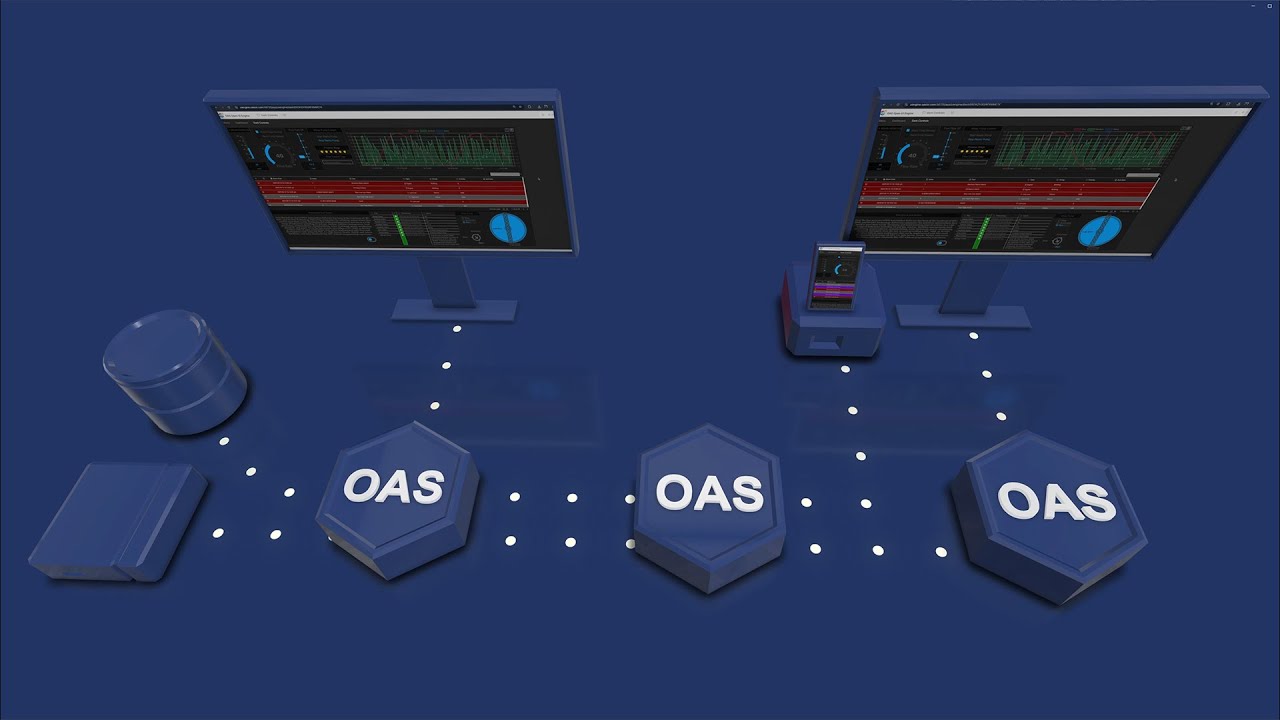Distributed Network Architecture
OAS Servers can be deployed in any configuration to achieve the highest performance, reliability, and flexibility in you network environment. You can aggregate data and logic in the cloud, take advantage of an Edge Computing architecture or combine features to meet your needs. To learn more about real-world implementations, see this article on Typical OAS Deployments.
a server-based, highly-scalable, network platform that enables the transport and transformation of your data
Data HistorianAchieve fault-tolerant logging, zero data loss, and multi-destination storage with our high-performance Store and Forward technology.
Visualization ToolsBuild Visualizations, User Interfaces, and server configuration interfaces for .NET, web technologies, native iOS and Android mobile apps
Device & Data ConnectorsThe OAS Platform provides rapid communications and connectivity to a wide variety of PLCs, devices, and databases.
IoT ConnectorsConnect to cloud-base IoT gateways such as AWS, Azure IoT Hub, Azure Event Hubs, Kafka, and more.
Alarm Logging & NotificationCapture events on each data point, log to open formats for historical analysis and archiving, and trigger real time notifications
SDKs & APIsExplore a wide variety of Developer Tools and APIs to allow you to create applications and system integrations to execute in any environment.
Networking FeaturesOpen Automation Software implements edge computing with a Distributed Network Architecture.
Download a fully functional trial of Open Automation SoftwareKey Features & Benefits
Zero Data Loss
All values are queued and delivered to each unique client on change with delivery verification and watchdogs for both clients and servers. This results in Data Logging and Alarm Logging store-and-forward capabilities so even on network failures, no data is ever lost.
Speed And Security
Server to server communications use an extremely lightweight protocol all while encrypting data packets for over-the-wire security.
Infinite Configurations
OAS Servers can be configured in infinite ways to share and aggregate data, including the option for one-way transport to prevent external systems from impacting the source.
Multiple Networking Options
Basic Networking
Reference remote data over fixed IPs or domains, while retaining all of the benefits of speed and security.

Live Data Cloud
Communicate with edge devices behind secure networks without the need for fixed IPs, creating a private network between OAS Servers.

Unidirectional Networking
Communication diodes for one-way, highly secure data transfer for reading data while making it impossible for clients to alter data at the source.

OAS Distributed Network Architecture beats typical Cloud Architectures
When it comes to networking your critical IoT typical cloud architectures are simply not up to the task. Only Open Automation Software's Distributed Network Architecture allows you to host your own live data with no data loss on network failure.
Network Feature |
OAS IoT DNA |
Typical Cloud |
|---|---|---|
| Accurate Live Data | ||
| No Data Loss on Network Failure | ||
| Small Compressed Packet Size | ||
| Open TCP Transport and/or REST |
||
| High Speed Throughput < 50 ms | ||
| Verification of Delivery of Data Source to Destination |
||
| Data Resolution of 100 Nanoseconds | ||
| Encrypted Secure Data Packets | ||
| Fastest Communication Possible No Database Required |
||
| Unlimited Data Usage No Fees |
Common Questions
Can edge data be accessed from a central server?
Yes, by deploying a lightweight OAS server on edge devices, they can aggregate data to a central OAS server where clients can connect or where HMIs can be driven. This can even be achieved with edge devices on secured networks without a fixed IP address using the OAS Live Data Cloud feature.
How can device data be secured on a public network?
OAS has several levels of security with authentication and authorization, but for the most secure data you can ensure read-only access using the Unidirectional Networking configuration, also referred to as a data diode. Read only data is sent to public-facing devices with no possibility of altering the source data.
Can network configurations be customized?
You can mix and match any of the supported networking configurations and use-cases. For example, you can set up a central data aggregation server in the cloud to drive enterprise-wide user interfaces. But you can also create site-specific networks with secured data only available on-premise.
Learn how thousands of customers are using the OAS Product Platform around the globe to achieve truly open industrial automation
24/7/365
Support
Technical support available by phone, chat, and email
30+ Years
Experience
Product efficacy, market testing, and reliability
Used in 10K+
Data Servers
OAS is used in thousands of businesses worldwide
See How We Compare
The initial cost of OAS is far less than our competitors – but the savings don’t stop there. We work with OEMS and System Integrators to provide perpetual licenses with quantity discounts with flexible tag pricing and unlimited client connections.
No Question Left Unanswered
We make getting started with OAS easy - Follow this step-by-step introduction to using the Open Automation Software platform, from selecting your data sources, product features, and data destinations.
Getting Started - Download, Setup & Support
Step-by-step introduction to using the Open Automation Software platform
How to manually add and define Tags using the Configure OAS application.
Familiarize yourself with OAS Networking and Tag addressing syntax.
Learn how to configure and use Basic Networking for direct address-based access to data.
Learn how to use OAS Live Data Cloud networking to move data from edge devices to a central server.
Learn how OAS can be set up to send secure, read-only data over UDP to external endpoints.
An overview of all ports used by the OAS Platform for networking and data access.
How to quickly access options and make custom changes.
How to active and manage OAS license.






